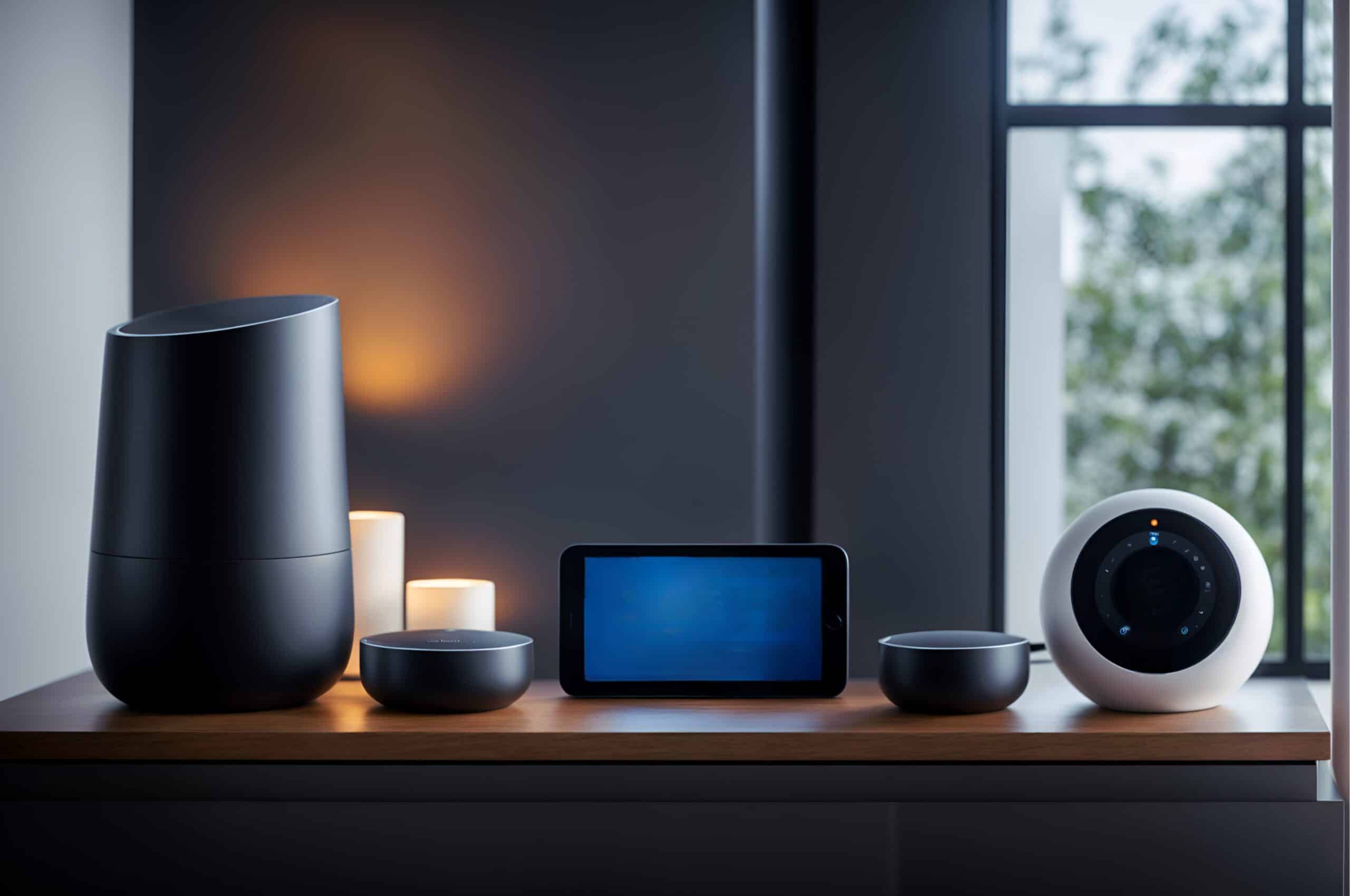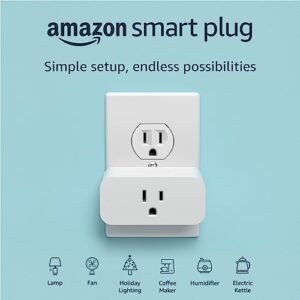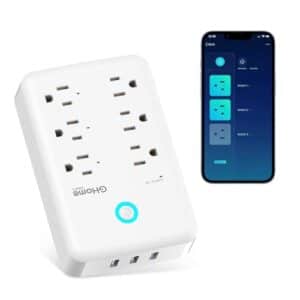How To Connect Smart Plug To Alexa?
Key Takeaways
- Connecting a smart plug to Alexa allows for controlling devices using voice commands
- The process involves plugging in the smart plug, downloading the Alexa app, putting the smart plug in pairing mode, connecting it to the Wi-Fi network, and completing the setup
- Best practices for setting up a smart plug with Alexa include ensuring compatibility, positioning the plug within range of the router, creating routines, naming devices, and keeping software updated
Connecting a smart plug to Alexa allows you to control your devices using voice commands. Whether you want to turn on a lamp, start your coffee maker, or control your home appliances, Alexa can make it happen. In this step-by-step guide, we will walk you through the process of connecting a smart plug to Alexa, ensuring that you can enjoy the convenience and automation it offers.
Step 1: Plug in the Smart Plug and Download the Alexa App
The first step is to plug in your smart plug and make sure it has power. Most smart plugs require a power source to function properly. Once the smart plug is connected to power, you will need to download the Alexa app on your smartphone or tablet. The app is available for both iOS and Android devices, and it is essential for setting up and controlling your smart plug.
Step 2: Put the Smart Plug in Pairing Mode
Next, you will need to put the smart plug in pairing mode. The exact method for doing this may vary depending on the brand and model of your smart plug. It is crucial to follow the instructions provided by the manufacturer to ensure a successful connection. Some smart plugs may require you to press and hold a button on the device, while others may have a specific pairing mode that needs to be activated in the app.
Step 3: Connect the Smart Plug to Your Wi-Fi Network
Once the smart plug is in pairing mode, you will need to connect it to your home Wi-Fi network using the Alexa app. Open the app and navigate to the “Devices” tab. From there, you can select “Add Device” and choose the type of device you want to add. Follow the on-screen instructions to connect the smart plug to your Wi-Fi network. Make sure to enter the correct Wi-Fi credentials to establish a stable connection.
Step 4: Discover the Smart Plug
After connecting the smart plug to your Wi-Fi network, you can use the “Add Device” feature in the Alexa app to discover the newly connected smart plug. The app will scan for available devices on your network, and once it finds the smart plug, it will be displayed on the screen. Select the smart plug from the list and proceed to the next step.
Step 5: Complete the Setup
Follow the on-screen instructions in the Alexa app to complete the setup process. This may involve giving the smart plug a unique name, assigning it to a specific room, or enabling additional features. It is essential to read and follow the instructions carefully to ensure a smooth setup.
Step 6: Control the Smart Plug with Alexa
Once the setup is complete, you can start controlling the smart plug using voice commands through Alexa. For example, you can say, “Alexa, turn on the living room lamp” or “Alexa, turn off the coffee maker.” Alexa will send the command to the smart plug, and it will perform the desired action. Enjoy the convenience of controlling your devices hands-free with Alexa!
Best Practices for Setting Up a Smart Plug with Alexa
While connecting a smart plug to Alexa is relatively straightforward, following some best practices can enhance your experience and ensure optimal performance. Here are some tips to consider:
1. Ensure Compatibility
Before purchasing a smart plug, make sure it is compatible with Alexa. Not all smart plugs work seamlessly with Alexa, so it is crucial to check the manufacturer’s compatibility information or consult customer reviews.
2. Positioning Matters
Place the smart plug within range of your Wi-Fi router to prevent connectivity issues. A weak Wi-Fi signal can cause intermittent connection problems, so positioning the smart plug closer to your router can help maintain a stable connection.
3. Create Routines
Utilize the Alexa app to create routines for your smart plug. Routines allow you to automate actions based on specific triggers or schedules. For example, you can create a routine to turn off all connected devices at bedtime or turn on the lights when you arrive home.
4. Name Your Devices
Give your smart plug a unique name to easily distinguish it from other devices when using voice commands. Using descriptive names can make it easier to control specific devices, especially when you have multiple smart plugs connected to Alexa.
5. Keep Software Updated
Regularly update the Alexa app and your smart plug’s firmware to ensure optimal performance. Manufacturers often release updates to fix bugs, improve compatibility, and introduce new features. Keeping your software up to date can help prevent issues and ensure a smooth user experience.
Troubleshooting Tips for Connecting a Smart Plug to Alexa
Despite following the steps mentioned above, you may encounter some issues when connecting a smart plug to Alexa. Here are some troubleshooting tips to help you resolve common problems:
1. Ensure Pairing Mode and Wi-Fi Network
Double-check that the smart plug is in pairing mode and connected to the same Wi-Fi network as your Alexa device. If the smart plug is not in pairing mode, it may not be discoverable by the Alexa app. Additionally, if the smart plug and Alexa device are connected to different Wi-Fi networks, they will not be able to communicate with each other.
2. Restart the Smart Plug
If Alexa is unable to find the smart plug during setup, try restarting the smart plug. Unplug it from the power source, wait for a few seconds, and then plug it back in. Restarting the smart plug can help resolve temporary glitches and connectivity issues.
3. Power Cycle Your Router
If you are experiencing connectivity issues between the smart plug and Alexa, try power cycling your router. Unplug the router from the power source, wait for a minute, and then plug it back in. This can help clear up any network issues that may be affecting the connection.
4. Contact Customer Support
If you have tried the above troubleshooting tips and are still unable to connect the smart plug to Alexa, it may be helpful to contact the manufacturer’s customer support. They can provide specific guidance based on the brand and model of your smart plug and help resolve any technical issues you may be experiencing.
Related Websites:
FAQs:
Q: What is a smart plug and what are its benefits?
A smart plug is a device that allows you to control your electronic devices remotely using a smartphone or voice commands. It offers convenience, energy efficiency, and home automation capabilities. With a smart plug, you can turn devices on or off, schedule them to operate at specific times, and even monitor energy consumption.
Q: What do I need to connect a smart plug to Alexa?
To connect a smart plug to Alexa, you will need a Wi-Fi network with a strong internet connection, a smart plug that is compatible with Alexa, and a smartphone or tablet with the Alexa app installed.
Q: How do I set up the smart plug?
To set up the smart plug, follow the manufacturer’s instructions for plugging it in and connecting it to your Wi-Fi network. Usually, this involves using the manufacturer’s dedicated app or scanning a QR code.
Q: How do I enable the smart plug skill on Alexa?
To enable the smart plug skill on Alexa, open the Alexa app, navigate to the skills section, and search for the skill related to your smart plug. Enable the skill by signing in to the smart plug’s account or scanning a QR code as instructed.
Q: How do I test the connection after setting up the smart plug?
To test the connection, use voice commands with Alexa to turn the smart plug on and off. For example, say “Alexa, turn on the Living Room Lamp” or “Alexa, turn off the Bedroom Fan.” This will verify if the smart plug is properly connected and responding to commands.






